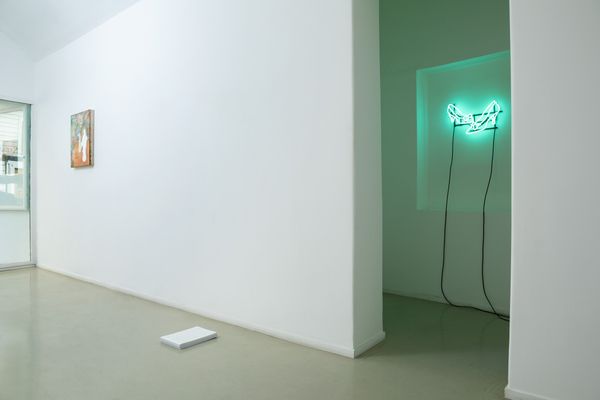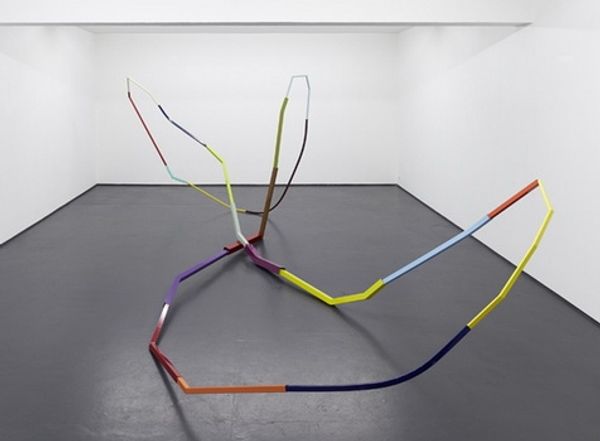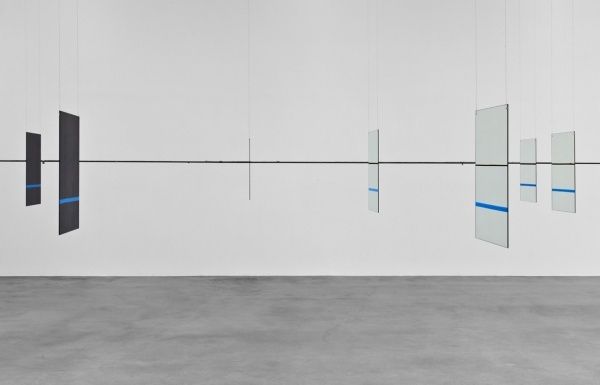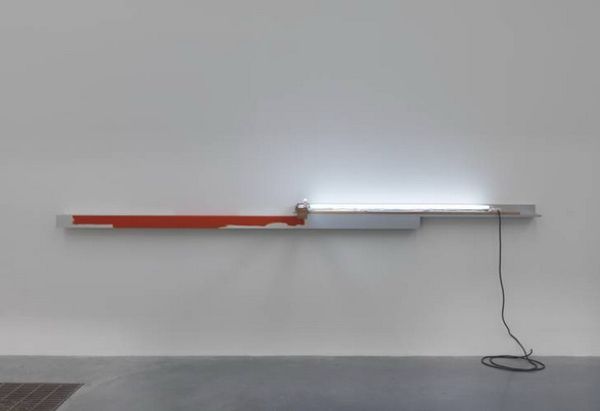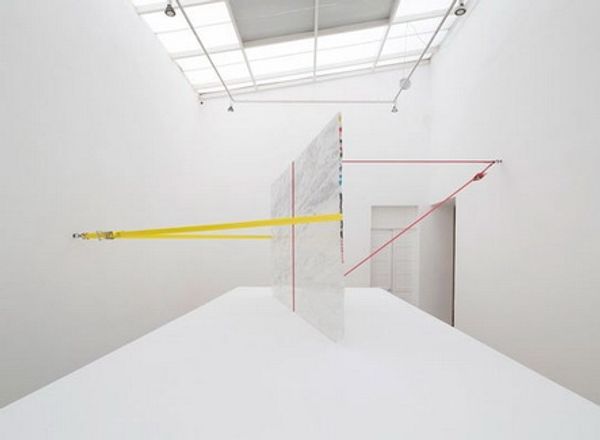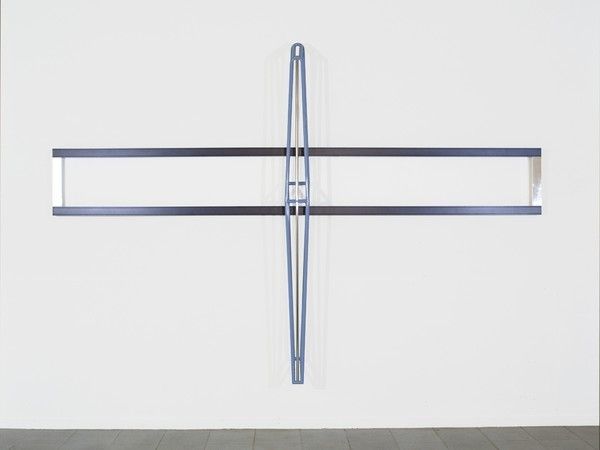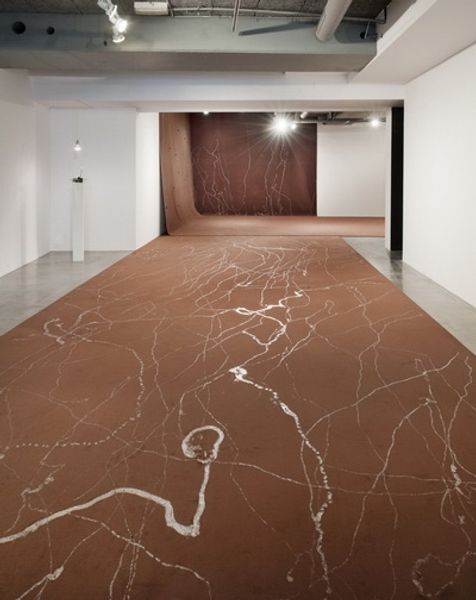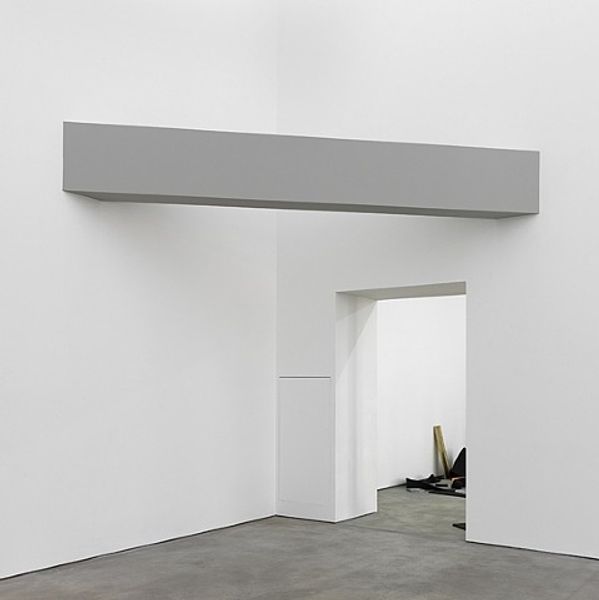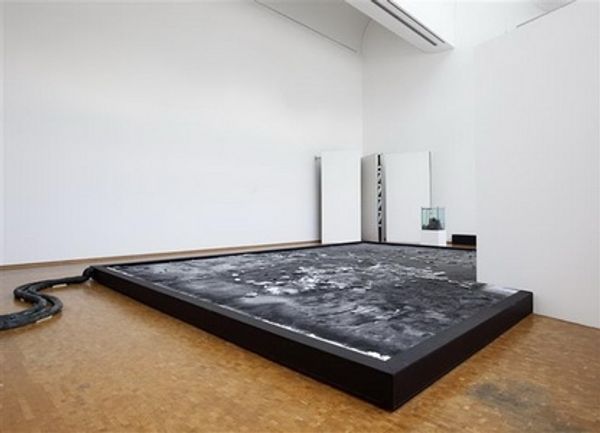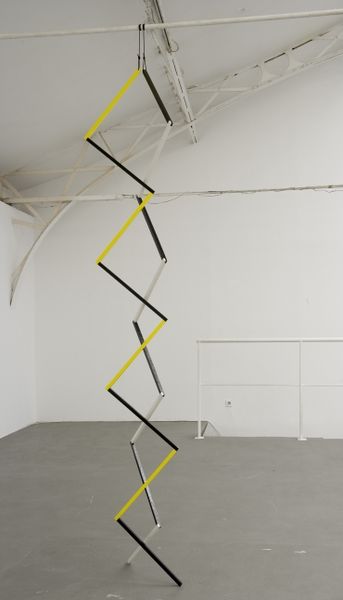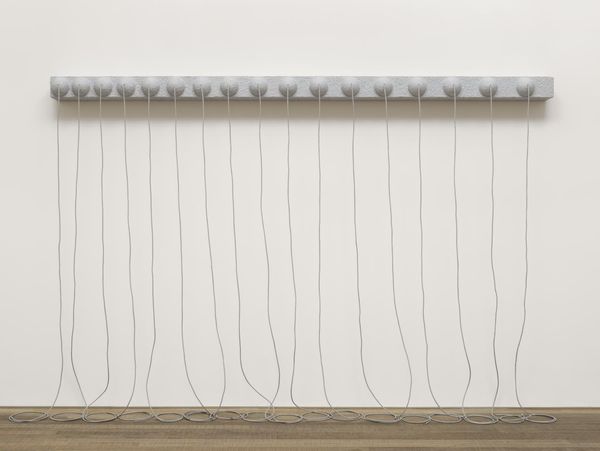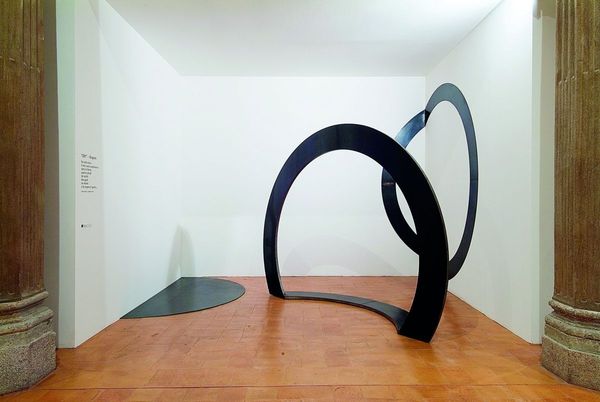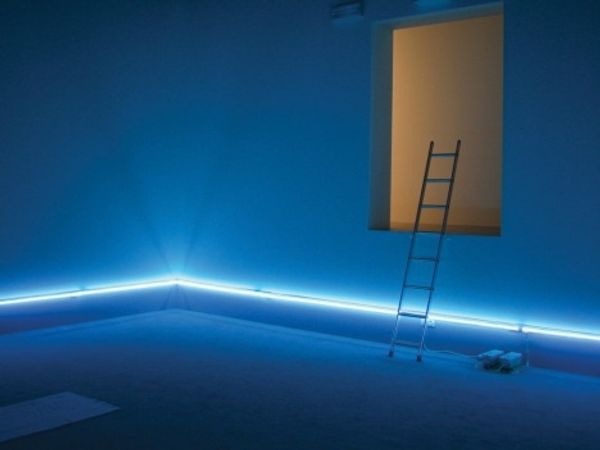
site-specific, installation-art
#
conceptual-art
#
minimalism
#
geometric
#
site-specific
#
installation-art
#
line
Copyright: Edward Krasinski,Fair Use
Editor: Right, so this is a reconstruction of Edward Krasinski’s installation from the 1970 Tokyo Biennial. The space is very white and minimal, and you have these bold blue lines extending across the room. It feels almost like a schematic. How do we interpret this work in its historical context? Curator: Krasinski's work at the Tokyo Biennial reflects a fascinating moment of transition in the art world. He employs a site-specific installation to disrupt the traditional gallery space. This work acts as a powerful commentary on the institutional framework that often dictates how we perceive art. It forces us to reconsider the very structures of presentation and reception. Notice the careful placement of the blue line and its interaction with the architecture, which turns the exhibition space into an integral part of the artwork itself. Editor: The blue line seems almost rebellious against the white cube. Do you see that as intentional? Curator: Absolutely. This work questions the neutral, sterile environment of modern art galleries. What if the 'art' isn't just the object, but the intervention, the moment of disruption within that controlled space? This installation pushes against the conventional boundaries that separate art from the everyday, inviting the viewer to question those constructed separations. This reflects the socio-political climate, where artists sought to engage directly with audiences outside formal settings, challenging the exclusivity of the art world. Editor: So it’s less about the blue tape itself, and more about what the blue tape *does*? Curator: Precisely! Consider the implications: what does it mean to 'reconstruct' this ephemeral act, so many years later? Does it restage a radical gesture, or domesticate a critical impulse? Editor: That makes me rethink my initial reaction. The “reconstruction” shifts the emphasis and that changes the whole meaning. Thank you, I hadn't thought about the institutional critique angle so directly before. Curator: Art's power lies in that very invitation for constant reassessment!
Comments
No comments
Be the first to comment and join the conversation on the ultimate creative platform.
